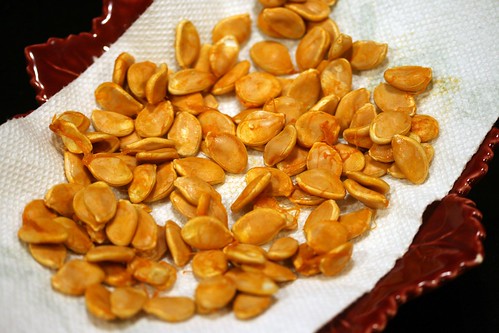
Today I roasted one of my delicious buttercup squash and I’m saving these seeds from it.
Each year I try to save one or two more types of seeds. For a few years now, I’ve saved Chinese pole beans, cayenne and Thai hot peppers. I sprouted my own sweet potatoes and garlic. For this year, I have also saved seeds from red runner beans, buttercup squash, and a mix of nasturtiums.
Saving seeds is Free! You to gradually improve the variety so that it becomes adapted to your garden conditions. And you save all the resources that would have gone into the packaging, shipping and selling of the seeds.
It’s easiest to save seeds from fruit-producing crops that tend not to cross pollinate. This includes beans, peppers, eggplants, and tomatoes. Squashes will cross pollinate if different varieties they are grown close by each other. (I grow buttercup and butternut squashes together, but I got such fantastic sweet squash from a volunteer buttercup last year that I am saving its seeds this year. Maybe I will end up with a crossed variety someday.)
I’ve never saved seeds from a crop that doesn’t produce fruit. Maybe this year would be a good time to try. This would include broccoli, kale, cabbages, lettuces and other greens, herbs like cilantro and basil, and roots like beets, carrots and onions. We don’t usually let the crops flower and go to seeds, but it’s quite easy to get lettuce and cabbages to bolt in mid summer. They make pretty yellow or white flowers that will eventually hold the seeds. I think the root vegetables are usually biennial and will go to seed if they are left in the ground a second year. Parsley is a biennial too. I always let my parsley grow two years, but I cut off the flower stalks. This is a seed I could start to save.
I’m still going over my crops from last year and recording how they did. When I finish I will pick a couple of my favorites and put them on my seed saving list for next year.
Last fall I made a video on how to save seeds for E-How. Here’s the link.
